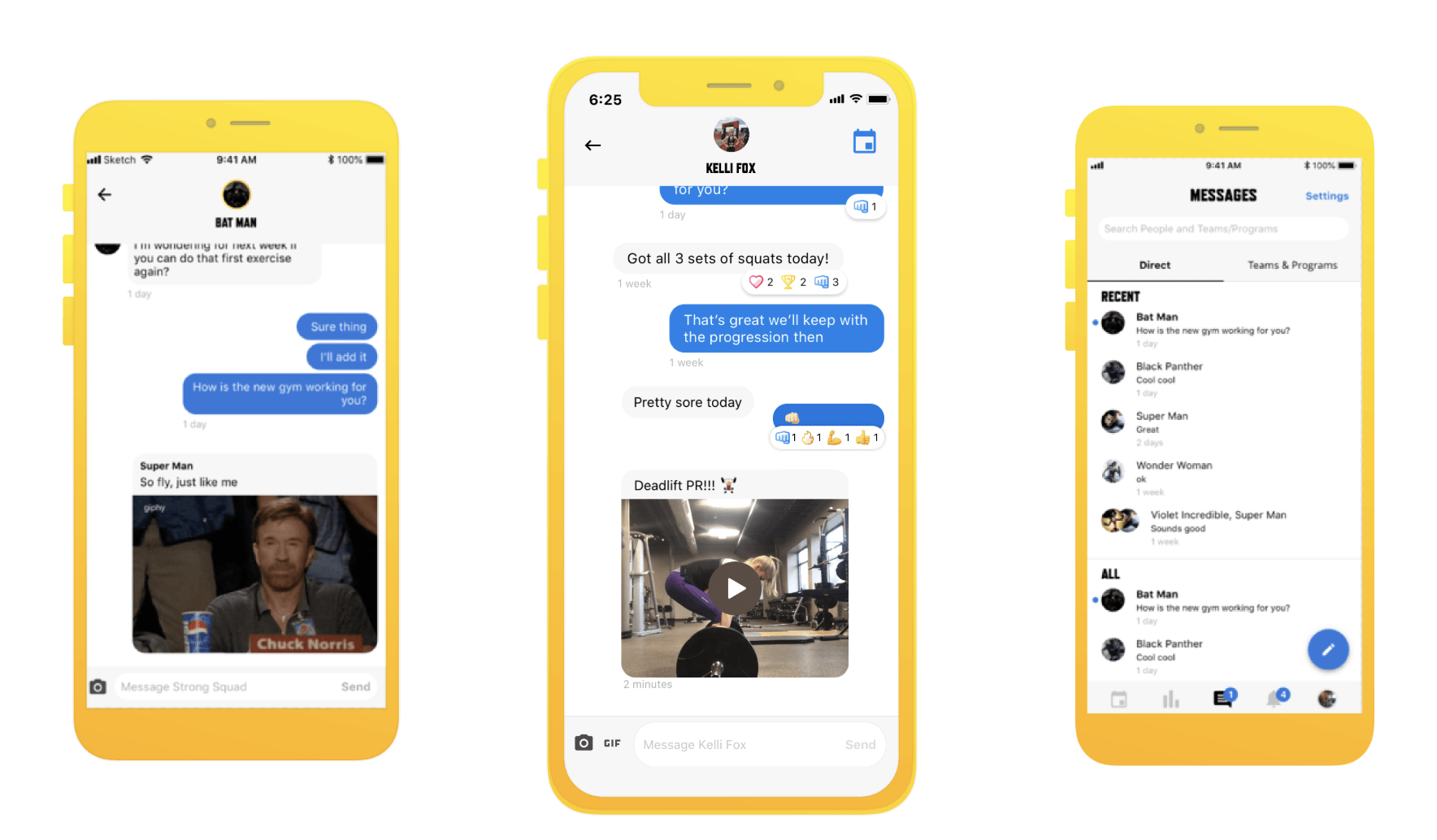How to Prime Your Workouts With a Better Warmup
Sports Performance | Strength & ConditioningWhen you are preparing for any type of training session it’s important to properly ready your muscles for action. In this article, Tim tells us how to effectively warm up and how to avoid your warm up becoming too long, elaborate, and gimmicky.
Tim Difrancesco
Doctor Tim DiFrancesco is the President & Founder of TD Athletes Edge. In December of 2011, he was named the Head Strength & Conditioning Coach of the Los Angeles Lakers in the NBA. While traveling with the Lakers for over 6 seasons from 2011-2017, Tim built TD Athletes Edge. TD Athletes Edge is nationally renowned for its evidence-based and scientific approach to training, nutrition, and recovery for athletes and fitness enthusiasts. Follow Dr. DiFrancesco on Instagram at @tdathletesedge
Find Coach DiFrancesco’s training in TrainHeroic’s Marketplace here.
// Make Your Warmups Effective and Efficient
For a long time, warming up before a workout, practice, or game was either a routine that looked like the old-school calisthenics R. Lee Ermey’s Gunnery Sergeant Hartman put his recruits through in Full Metal Jacket or simply jogged around the playing areas a couple of times.
If you go back and watch grainy footage of an old NBA game, you won’t see trainers using massage guns or players taking the court for pre-activation exercises long before a game.
For good or for ill, those guys with the big hair and short shorts just went out there, went through the layup line, got a few practice shots in, and then did their thing.
Or if you look at the first few World’s Strongest Man contests, those man mountains might move a few lighter things around before tackling heavy ones, but there was no elaborate pre-competition routine.
In recent years, the pendulum has swung pretty far the other way.
In one sense this is a good thing. From the pros to the college level to everyday folks, more people understand the physiological benefits of revving their engine before they make it race.
Yet with the continued proliferation of video content from anyone with a smartphone, it’s arguable that warmups have started to become too long, elaborate, and gimmicky.
Let’s look at a few of the issues and then get to ways to make your warmup more effective and efficient.
Going Past the Point of Diminishing Returns
When I look at some people going through their warm up, it seems like they’re trying to pack in more than they would in their actual workout.
There’s certainly something to be said for a little variety but all too often, this part of the session resembles overblown circuit training.
If you go too long and hard with your warmup, you’re already depleting energy stores that you’ll need later and might start to get fatigued before you’ve even begun your first set with a working weight.
If you Googled “How long should I warm up for?” you could probably go down an internet rabbit hole for hours or even days, as it seems every fitness-focused forum, Facebook group, and Reddit thread has umpteen posts on the topic.
While the answer is largely dependent on the activity you’re preparing for, your unique physiology, and your training history, I believe there is a line of best fit that we can draw that will be sufficient for most people.
From my experiences preparing the Lakers to working with competitive and recreational-level amateurs and everyone in between, I’ve found that the sweet spot for a warmup is within the five to eight-minute range.
If you have an injury or chronic condition, then you might go as long as 10 minutes.
Going any further will not only take you into diminishing returns but can also create an engagement issue.
If you’ve got to struggle to get through a long pre-activation routine, your attention, motivation, and enthusiasm might well start to wane by the time you get into the workout itself, diminishing your results.
So in most cases, keeping your warmup short is for the best physically and mentally.
Prepare How You Want to Perform
Another common area with warming up is that people are actually doing the opposite.
You want to prepare your body for action by firing it up, rather than calming it down.
When I see people doing static stretches and foam rolling, they think they’re doing the former but are in fact stimulating a calming parasympathetic response.
This is more apt for rest and recovery and should be saved for the cooldown after your workout and when you’re trying to settle your system in the evening.
You don’t want to be sending mixed signals to your body by encouraging it to slow down when you need to speed up.
So unless you have an acute injury or chronic condition that requires a little extra effort to help get you unstuck, save the flexibility work for afterward.
An additional mistake is performing movements that have little to nothing to do with the exercises you’re actually going to do during your workout.
Your warm up should grease the groove of most or all of the exercises you’re about to perform with speed, load, or both during the main portion of your training.
Sometimes a warmup is also too flat, in that the intensity level stays flat throughout. Instead, you should dial it up as you progress through your exercises and peak during the final few reps, such as by performing a couple of turf sprints or vertical jumps.
Formulating a More Effective Warmup

The duration of a warmup and its intensity level aren’t the only considerations.
We also need to go back to the beginning and think about what you want to achieve in this phase of your training.
First, you need to flip the switch from static to active.
You also need to go from cold to warm and raise both your breathing and heart rates. And you should explore different planes and ranges of motion to ready your muscles, joints, and connective tissues to move safely and effectively during your workout.
You’ll need just enough activation to get your system firing on cylinders, and nothing more.
In the initial phase of the warmup – floor to standing – it’s effective to start your prep work on the ground with a couple of exercises that turn on your glutes and posterior chain, like dead bugs and bridges.
An exercise like a yoga pike can prepare your chest for load and also get your shoulders into an overhead position. As you transition up onto your feet, you can move down the turf (or the floor of your gym or garage) in linear and lateral patterns, and then start to add in some rotation.
I like to incorporate some kind of squatting and hinging too, as it’s likely you’ll be utilizing these patterns during your workout.
As the warmup progresses, it’s beneficial to add in more dynamic movements.
I’ll have my clients work on landing mechanics and do a little deceleration. We’ll perform some drop squats, bounding, skipping, and hopping as we move through the jump-to-land phase.
This way, we’re ramping things up as we approach the start of the actual workout without overstressing the musculoskeletal, cardiovascular, or energy systems.
A Sample Warmup
To get started with your newly efficient warmup, try working through the exercises below, which are broken down into the sections I just mentioned.
Remember to try and keep within the five-to-eight- minute range in total, and to gradually increase the tempo and intensity level as you move through the warmup.
From the floor
Standing up
Jump to Land
Programs By TD Athletes Edge
Even when you can’t get to the gym, that doesn’t mean the gym can’t come to you! TD Athletes Edge brings you the following at-home bodyweight training guide to continue working towards your individual health and wellness goals from the comfort of your own home.
TAKE YOUR TRAINING
TO THE NEXT LEVEL
The TrainHeroic Marketplace
TrainHeroic brings online training and strength programs to life with an unmatched imersive training experience delivered directly to your phone. Browse our Marketplace for thousands of programs or take your training up a notch by joining an online community with fresh programming and coaching by some of the biggest names in the strength game starting at $15 / month.

READY TO TRY TRAINHEROIC?
Our powerful platform connects coaches and athletes from across the world. Whether you are a coach or trainer looking to provide a better experience for your clients, or you’re an athlete looking for expert programming, click below to get started.
Want more training content?
More coaches and athletes than ever are reading the TrainHeroic blog, and it’s our mission to support them with the best training & coaching content. If you found this article useful, please take a moment to share it on social media, engage with the author, and link to this article on your own blog or any forums you post on.
Be Your Best,
TrainHeroic Content Team
HEROIC SOCIAL
HEROIC SOCIAL
TRAINING LAB
Access the latest articles, reviews, and case studies from the top strength and conditioning minds in the TH Training Lab


